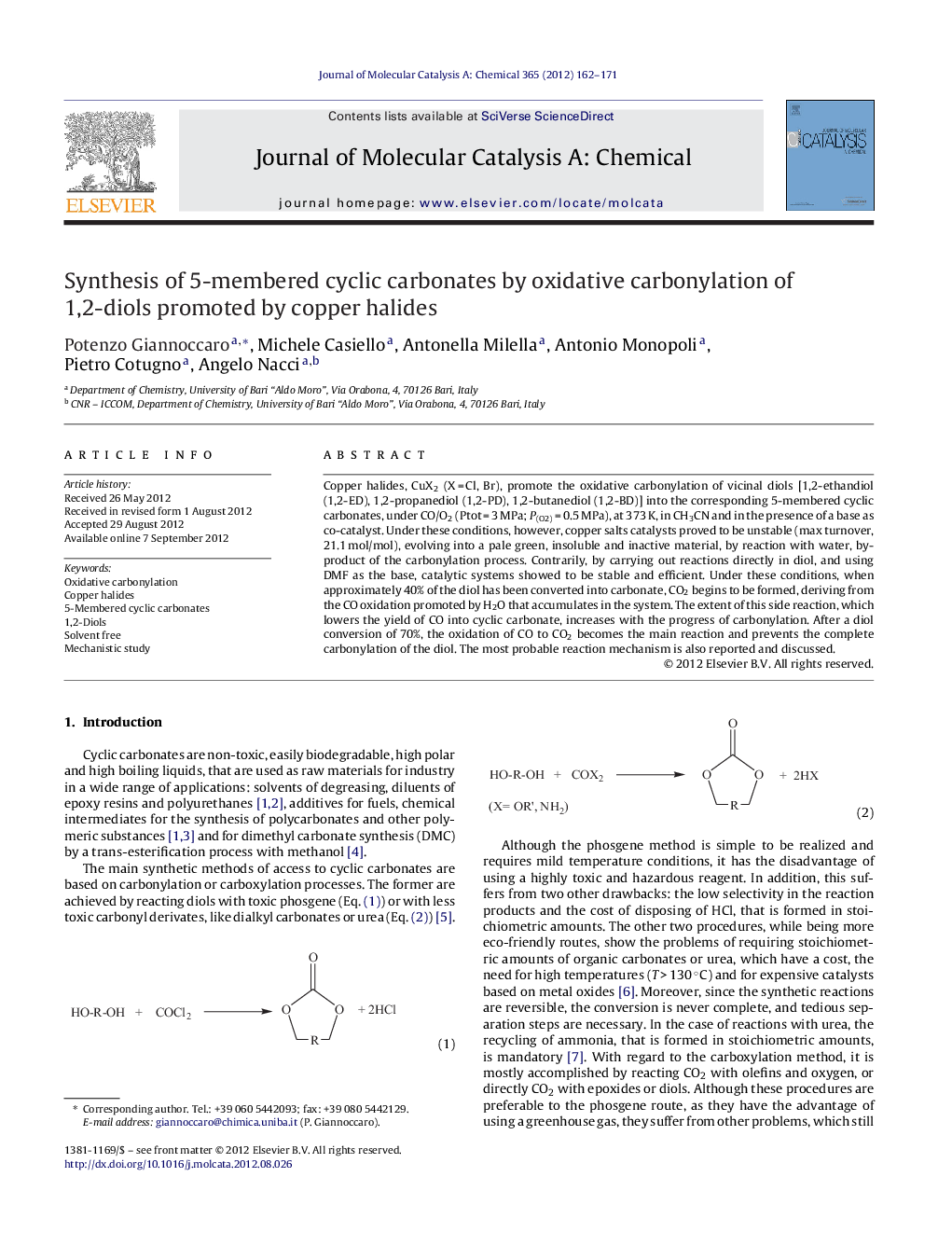| Article ID | Journal | Published Year | Pages | File Type |
|---|---|---|---|---|
| 66092 | Journal of Molecular Catalysis A: Chemical | 2012 | 10 Pages |
Copper halides, CuX2 (X = Cl, Br), promote the oxidative carbonylation of vicinal diols [1,2-ethandiol (1,2-ED), 1,2-propanediol (1,2-PD), 1,2-butanediol (1,2-BD)] into the corresponding 5-membered cyclic carbonates, under CO/O2 (Ptot = 3 MPa; P(O2) = 0.5 MPa), at 373 K, in CH3CN and in the presence of a base as co-catalyst. Under these conditions, however, copper salts catalysts proved to be unstable (max turnover, 21.1 mol/mol), evolving into a pale green, insoluble and inactive material, by reaction with water, by-product of the carbonylation process. Contrarily, by carrying out reactions directly in diol, and using DMF as the base, catalytic systems showed to be stable and efficient. Under these conditions, when approximately 40% of the diol has been converted into carbonate, CO2 begins to be formed, deriving from the CO oxidation promoted by H2O that accumulates in the system. The extent of this side reaction, which lowers the yield of CO into cyclic carbonate, increases with the progress of carbonylation. After a diol conversion of 70%, the oxidation of CO to CO2 becomes the main reaction and prevents the complete carbonylation of the diol. The most probable reaction mechanism is also reported and discussed.
Graphical abstractFigure optionsDownload full-size imageDownload high-quality image (94 K)Download as PowerPoint slideHighlights► CuCl2 acts as an highly efficient catalyst in the oxidative carbonylation of 1,2-diols. ► Catalyst is more effective under solventless conditions. ► Cyclic carbonates are synthesized by reaction of 1,2-diols with CO/O2.
